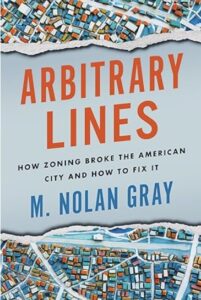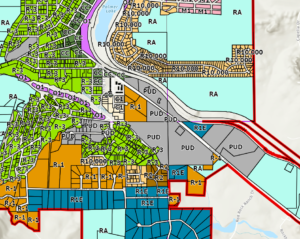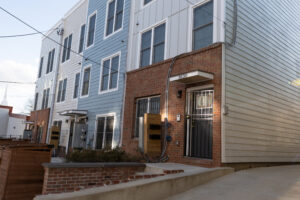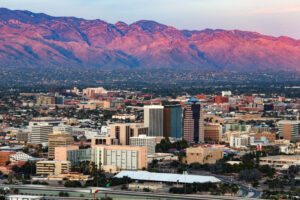 This month, we’re reading Arbitrary Lines: How Zoning Broke the American City and How to Fix It by M. Nolan Gray.
This month, we’re reading Arbitrary Lines: How Zoning Broke the American City and How to Fix It by M. Nolan Gray.
Gray holds B.A. degrees in philosophy and political science from the University of Kentucky and a Master of City and Regional Planning degree from Rutgers University. After working in the city planning department in New York City, he is now a Ph.D. student in urban planning at the University of California, Los Angeles, and served as a Research Fellow in the Urbanity Project at the Mercatus Center at George Mason University.
Discussion Questions
What are your experiences and impressions of zoning?
What — and whose — ideologies and economic concerns drove the development of zoning in different American cities during the early 20th century, according to Gray?
Why has the ideal of detached, single-family homes with lawns been so important to American thinking? How has devotion to this ideal shaped zoning and urban development? Has it been significant in your own life, and if so, how?
Why and how did the federal government become involved in promoting zoning?
On p. 36, Gray suggests looking at your city’s zoning map. “What zoning district do you live in?” he asks. “What are the more common zoning districts in your city? How are they distributed?” Answer these questions!

Here are zoning maps for some of the cities in El Paso County:
- Colorado Springs
- Fountain
- Green Mountain Falls (PDF; includes land in both El Paso and Teller counties)
- Manitou Springs (PDF)
- Monument
- Palmer Lake
Zoning and the Housing Crisis in the United States

According to Gray, in what three ways has zoning directly contributed to the lack of affordable housing in the United States?
How do minimum lot size and minimum parking requirements drive up the cost of housing while limiting the supply?
What is the homevoter hypothesis, and how does it explain the increasingly restrictive nature of zoning over the past half-century?
The Impact of Zoning on Innovation and Economic Growth
What are some of the career and entrepreneurial benefits to living in a city, according to Gray? How and why do cities offer more choices for their residents?

What aspects of cities encourage greater productivity? How does this translate on the national level?
How do high costs of urban living impact innovation and production?
Given the costs of zoning (see p. 76), why do you think it remains so pervasive?
Zoning and Racial Segregation
How did a desire to enforce racial segregation drive the development of zoning policies?
How has class segregation, enshrined in zoning laws, continued to support racial segregation?
The Impact of Zoning on Climate and the Environment
Why are cities actually more green than suburbs, according to Gray? What are some ways that single-family homes contribute to environmental harm?
How does zoning impact the development of mass transit?
Challenging Zoning Practices
What are some of the ways that American cities are fighting zoning restrictions? What do you think of these ideas?
What is NIMBYism, and how does it affect zoning? Can you think of examples of NIMBYism in your community?

What additional steps does Gray advocate to “make zoning less bad”? Do you think these steps are practical? Why or why not?
What can state governments do to help rein in zoning regulations? What does Gray say about the appropriateness of state involvement?
Gray says the ultimate goal should be to abolish rather than reform zoning. Do you agree or disagree? Why?
Final Thoughts
What cities does Gray reference that don’t have zoning? How has this worked out for them? What lessons can be taken from them for other cities?
Where did you agree with Gray’s arguments? Where did he fail to persuade you, and why? What do you think of his conclusions about zoning?
As Gray notes, zoning essentially is a government mandate on how private property can be developed and used, but many residents accept this loss of personal freedom because they believe it supports their property values. Where do you fall on these issues?
What have you learned about zoning and urban planning through reading this book? Has it changed your views, and if so, how? What do you plan to do differently as a result?
Habitat and Zoning

D.C. Habitat for Humanity and the D.C. Department of Housing and Community Development (DHCD) work together through the DHCD’s Inclusionary Zoning Program. The program requires that most new housing developments, and some renovations, must allow for a certain percentage of their rental units to be affordable and available only to families making between 50-80% of the area median income.

